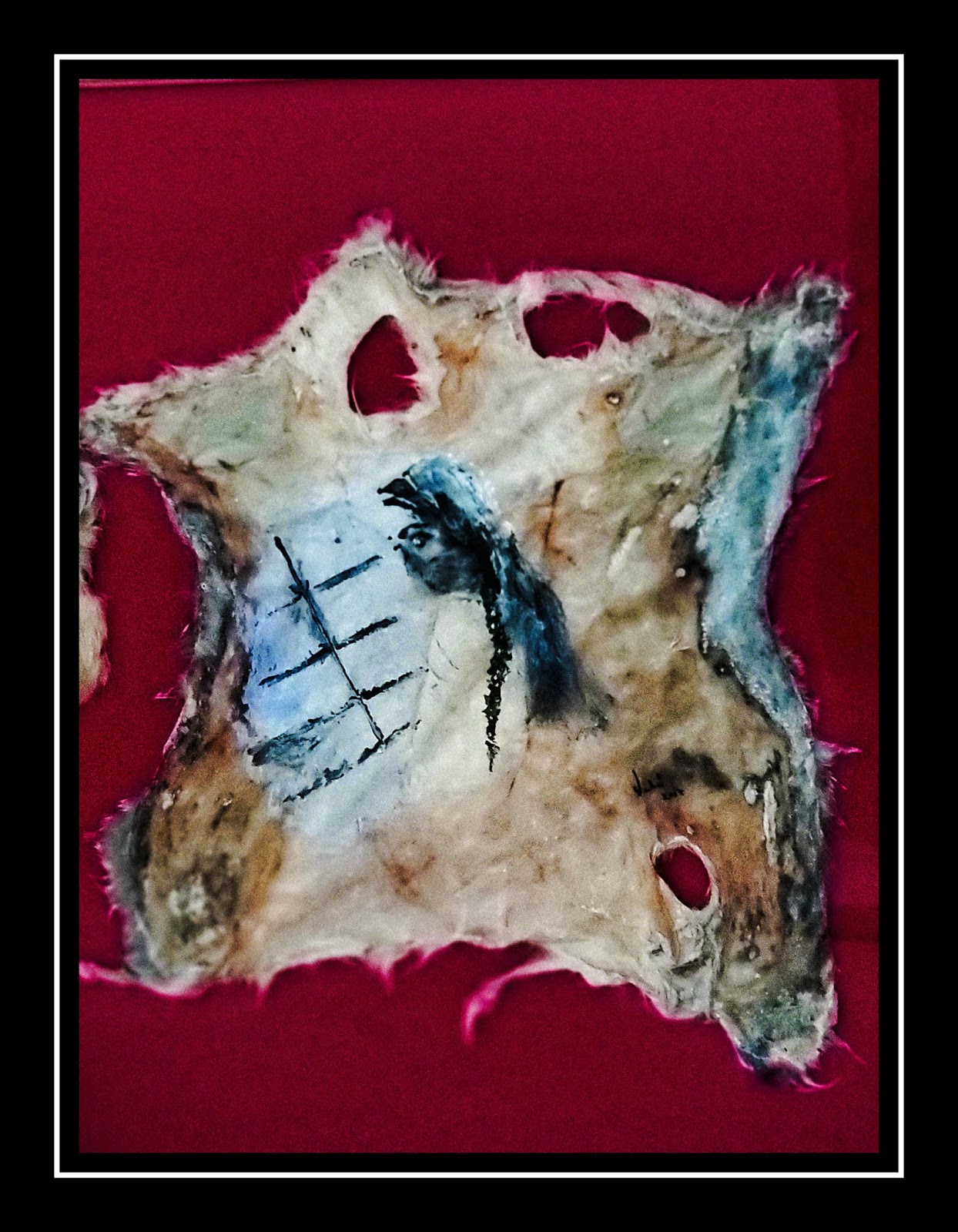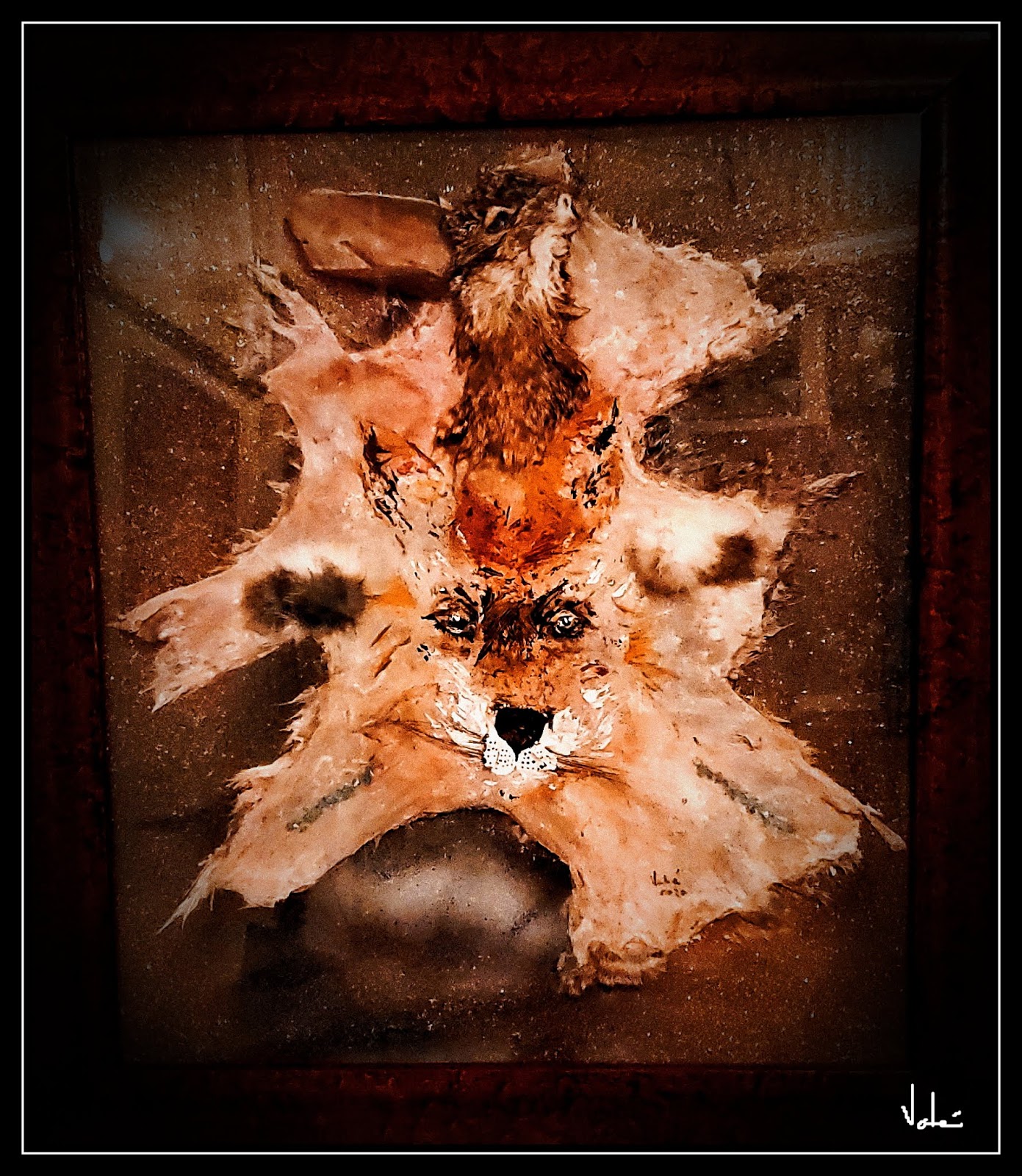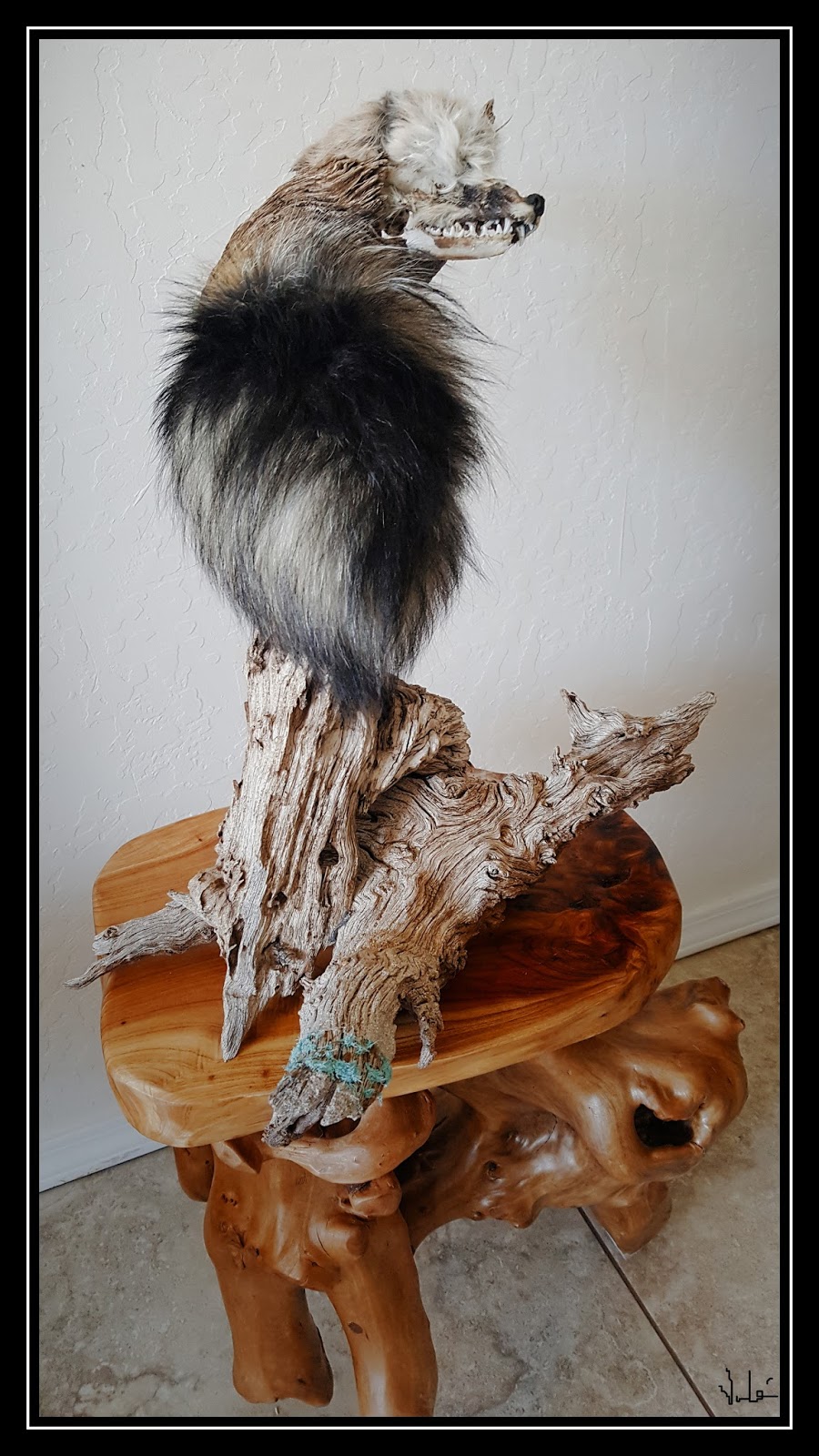From Hachiko to Iranian Vampire Western Movie
Yesterday a visitor to my blog wrote:
“You show us step by step how you transform
a hare skin to a painting, but do not say the source of your inspiration.”
Fair enough.
Well, since nothing comes of nothing, we all take a feeling,
scenery, an old memory or an imagination moment to reshape and transform into a
new moment. So, here are a couple of little “secrets” about two of my
paintings.
In 2017 I painted a woman’s profile with minimal draws of my
painting knife. I started this type of painting, called impasto, after I saw an exhibit of Lucien Freud’s works in Madrid.
Here is that painting:
And a close up:
The inspiration came from a moment in the first Iranian
Western-genre noire movie (2014) titled “A girl walks home alone at night” which
got special accolades at the Sundance Film Festival. I think it was Sheila Vand’s
attitude that I found extremely attractive in its minimalistic, B&W capture
in one frame.
Here is that frame that I found on the Internet (no copy
write seems required to use):
The full page can be seen on my blog at https://vaheark.blogspot.com/2017/10/if-she-looks-back-follow-her.html
The second painting I would like to discuss is that of a
mountain lion I painted recently. I always look at the particular shapes of the
hare skin I use as canvas and try to imagine what would best fit within those
shapes. In this case I thought of my dog
and his one lazy ear! Indeed, he is a large Akita with one erect and one always
floppy ear, just like Hachiko the famous Akita of Japan whose statues are all
over Japan.
Here is a photo of Hachiko from the 1920s:
And one of my dog guarding one of my paintings…
So, these sources of inspiration ended in a painting of a
mountain lion with a prominent single ear, even if now it i the left ear that is erect!
The full page about this painting can be seen at https://vaheark.blogspot.com/2020/02/mountain-lion-born-from-hole-in.html
So inspiration has to be there, but the transformation is
never photographic.
May 2, 2020
© Vahé A. Kazandjian, 2020








Comments
Post a Comment